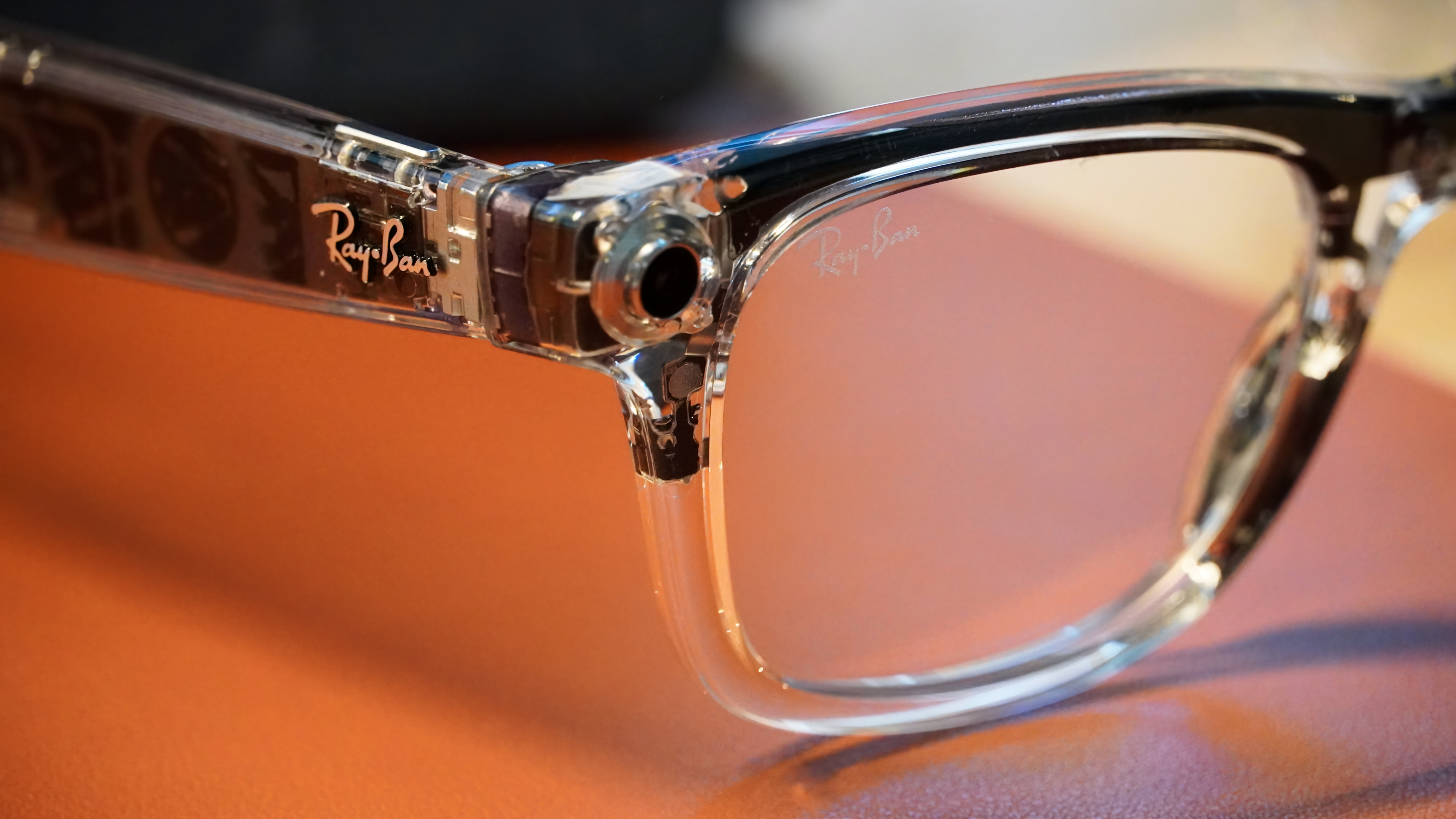Motorola Razr Plus 2024 vs. Samsung Galaxy Z Flip 5: Which is the best?
The new Razr Plus 2024 brings some noteworthy upgrades, but is it enough to dethrone the Z Flip 5?

Big improvements
The new Motorola Razr Plus 2024 might not look all that different from the 2023 model, but there are plenty of upgrades that make it a much better product. It's a little heavier due to the larger battery, but the in-hand feel has improved thanks to the new materials and textures. It has a flagship-grade processor, a smaller hinge, higher-resolution cameras, and brighter displays. The cover display is one of the largest you'll find, letting you perform most routine tasks without opening the phone. The slick software with Moto AI smarts completes the great user experience.
Pros
- Larger, brighter cover screen
- Powerful chipset
- 50MP dual-rear cameras
- Larger battery with 15W wireless charging
- IPX8 water resistance
- Slick software
Cons
- No ultrawide camera
- Lacks dust protection
- Only one RAM/ROM configuration
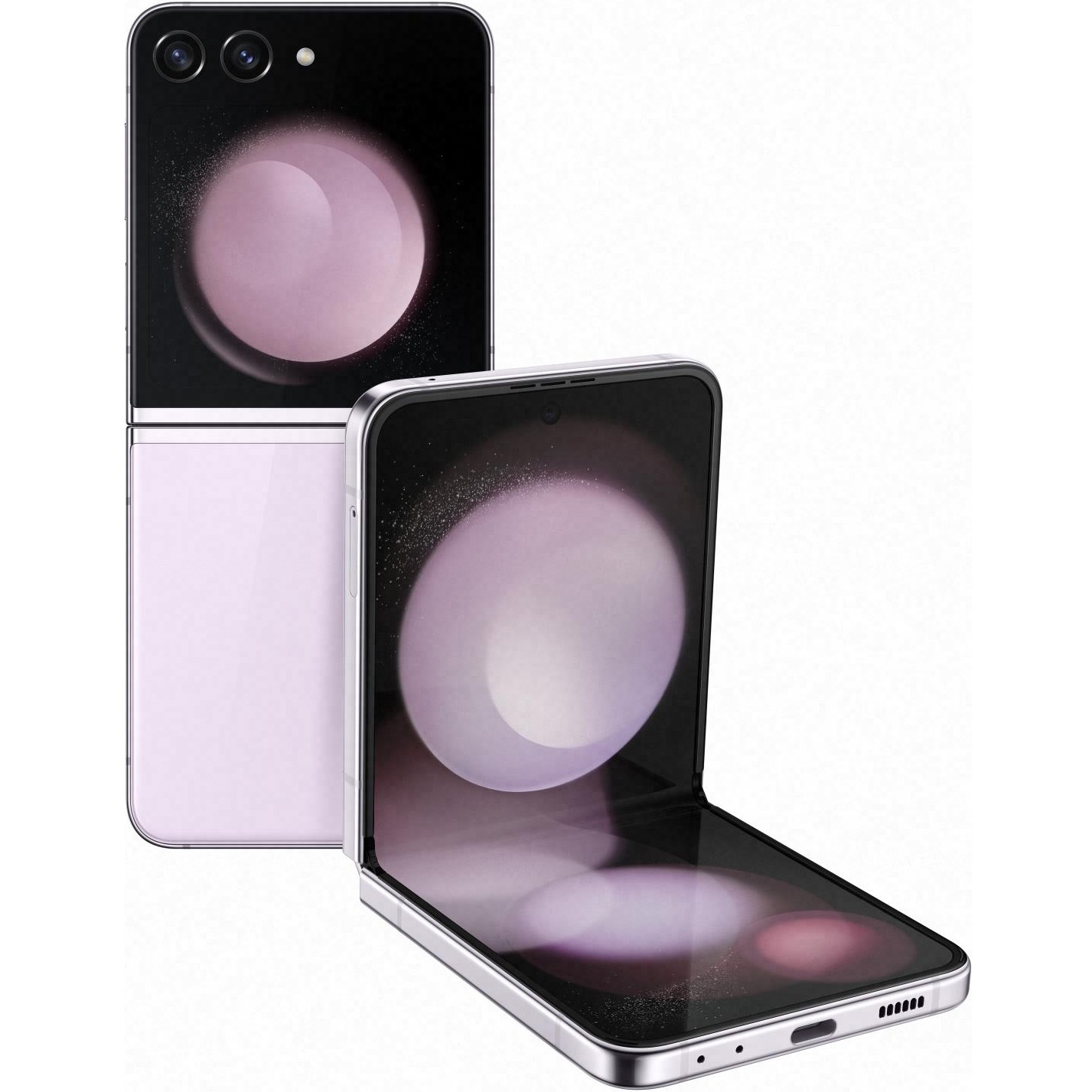
The defending champ
The Samsung Galaxy Z Flip 5 is a big upgrade over its predecessor as Samsung finally bit the bullet and gave it a large and useful cover screen. It also has a striking design, decent cameras, great software with Galaxy AI tricks, and a 2023 flagship Qualcomm processor. Like the Razr Plus 2024, it too lacks any official dust protection rating, and we found the battery life to be just about okay. The cover display, while larger than before, is still limited in terms of functionality. The Z Flip 5 is still the foldable to beat thanks to its wide availability and timely software updates.
Pros
- Large cover screen
- Surprisingly decent cameras
- Performs like a champ
- Great design
- Relatively fast 15W wireless charging
- One UI has nice foldable quirks
- Water resistance
Cons
- Battery life could be better
- Cover screen takes some setting up
- Still only two rear cameras
- No dust resistance
- Only 25W wired charging
Motorola Razr Plus 2024 vs. Samsung Galaxy Z Flip 5: Design
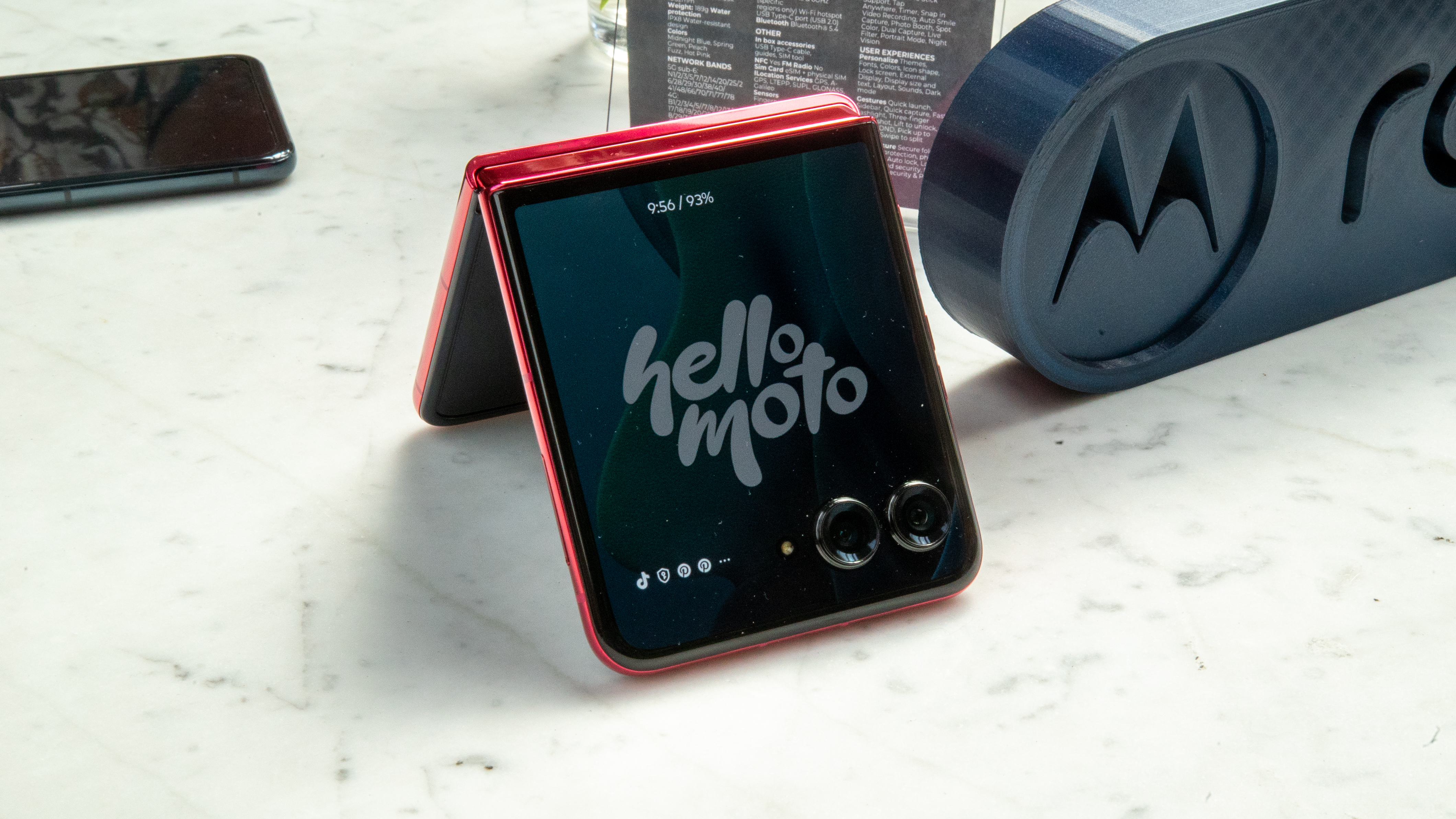
The new Motorola Razr Plus 2024 (also known as Razr 50 Ultra in some markets) has roughly the same dimensions as the 2023 model. The frame uses 6000 series high-strength aluminum and has a thickness of 7.09mm when open and 15.32mm when closed. The weight has gone up a bit to 189g and we noticed this when compared to its predecessor.
The Razr Plus 2024 comes in a fun and wide range of colors like Midnight Blue, Spring Green, Peach Fuzz, and Hot Pink. Fingerprints are not an issue with this one thanks to vegan leather back panels for all the colors. Interestingly, each one has a slightly different texture.
The Samsung Galaxy Z Flip 5 has a slightly slimmer aluminum frame so it's marginally sleeker when folded or unfolded. It's a tiny bit lighter too at 187g, but this difference is barely noticeable. It also comes in a wide range of colors with certain shades being exclusive to some regions. In the U.S., it's available in Graphite, Lavender, Cream, and Mint.
Motorola Razr Plus 2024 vs. Samsung Galaxy Z Flip 5: Displays

Motorola has always been ahead of the game with the displays on its foldables, and the new Razr Plus 2024 raises the bar yet again. The outer display is now a massive 4 inches with much slimmer bezels all around. This pOLED panel has a crisp 1,272x1,080 resolution with a 165Hz refresh rate, which is crazy good for a secondary display.
Thankfully, it's now an LTPO-type OLED which means the refresh rate can dynamically scale down to double or single-digit frequencies in order to conserve battery. The display is also brighter with 2,400 nits of peak brightness, has Gorilla Glass Victus protection, and HDR10+.
The Galaxy Z Flip 5 has a comparatively smaller 3.4-inch Super AMOLED panel with a 60Hz refresh rate and a lower 720x748 resolution. The maximum rated peak brightness is also lower at 1,600 nits. Despite that, we didn't face any issues viewing content on the outer display even in daylight. The display is also oddly shaped, like a folder, and it doesn't wrap around the cameras the way the Razr Plus display does.
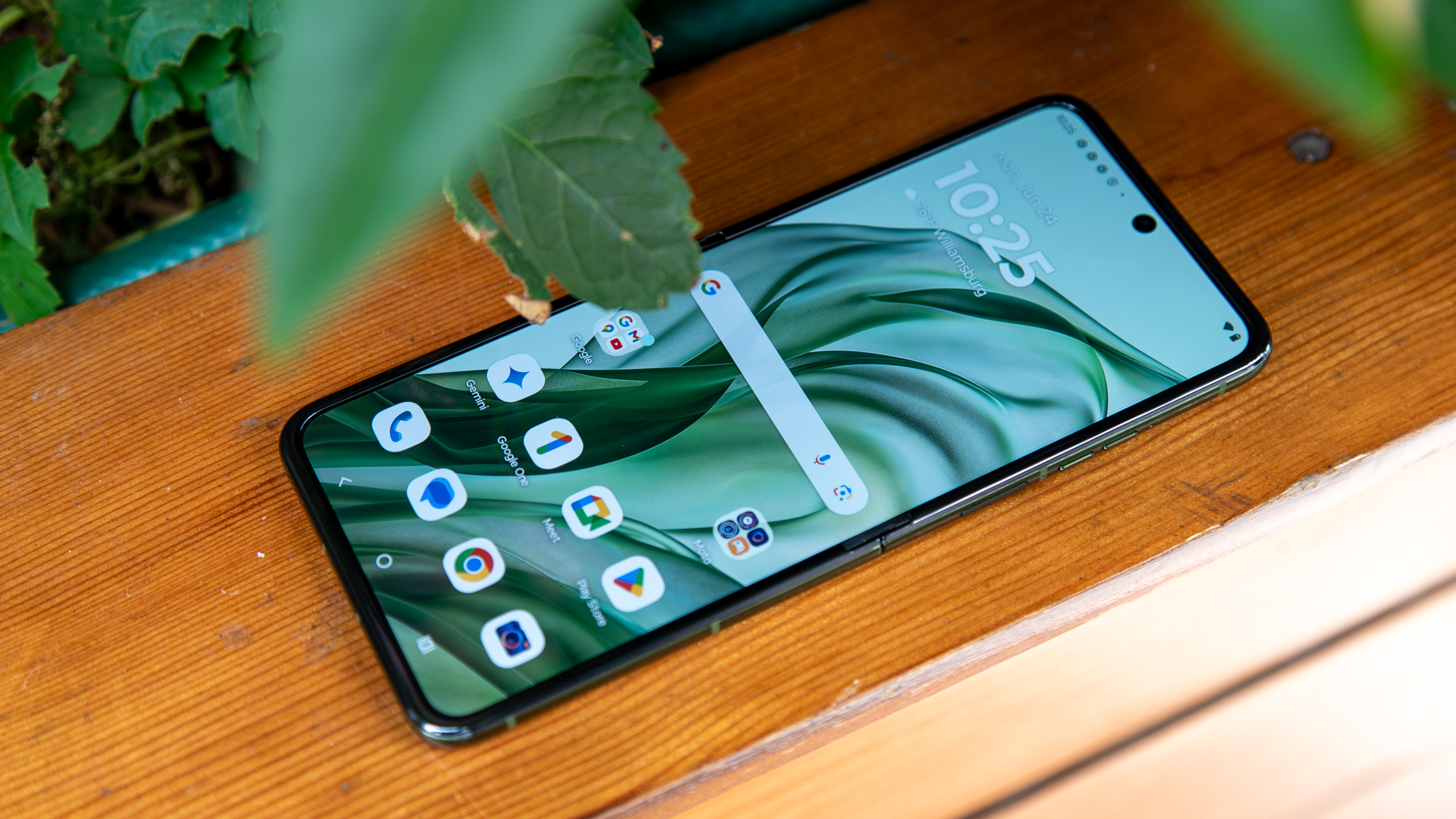
The primary folding display on the Z Flip 5 is a bright and vivid 6.7-inch Dynamic AMOLED 2x panel with a 2,640x1,080 resolution and a 22:9 aspect ratio. The peak brightness has been bumped up from its predecessor up to 1,750 nits. This folding display is of the LTPO variety, with a variable refresh rate of 1Hz to 120Hz. The crease is still visible when viewed off-axis but it's hardly a hindrance when consuming content in the regular fashion.
Get the latest news from Android Central, your trusted companion in the world of Android
The Razr Plus 2024 though, has a more impressive folding display. It's a larger 6.9-inch pOLED panel with the same resolution as the Flip 5. It also has LTPO tech with a variable refresh rate, but up to 165Hz. Motorola has bumped up the peak brightness here up to 3,000 nits, which is quite impressive.
Motorola Razr Plus 2024 vs. Samsung Galaxy Z Flip 5: Hardware
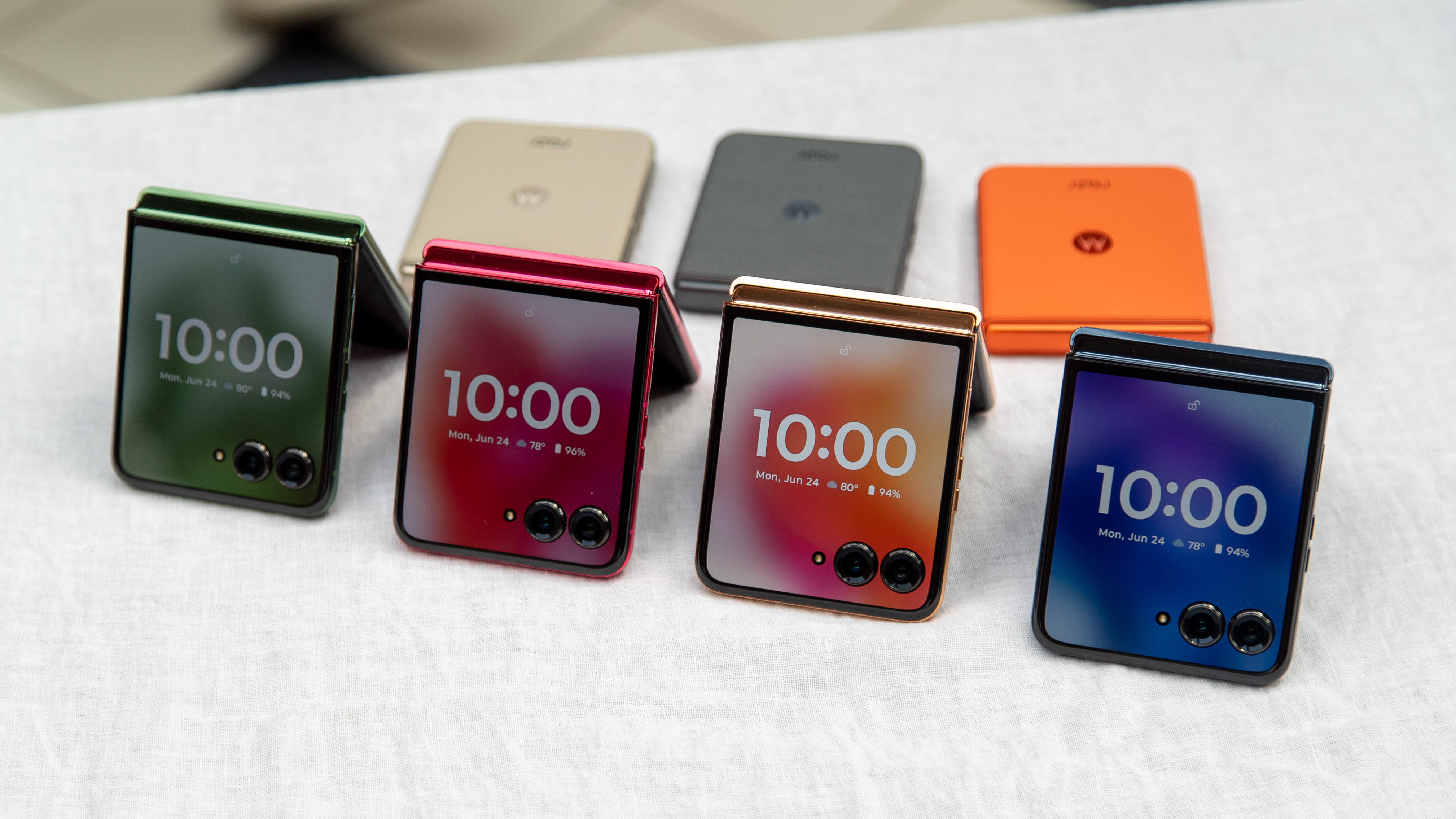
The Motorola Razr Plus 2024 benefits from having the most recent processor, the Snapdragon 8s Gen 3. It's more of a mid-range flagship chip which we've seen in a couple of recent Chinese phones like the Poco F6 and Realme GT 6. On the other hand, the Galaxy Z Flip 5 has a proper flagship SoC from 2023 called the Snapdragon 8 Gen 2. Performance is excellent with multitasking and even with games. We didn't notice any sort of overheating either in our review.
Despite the different generation chipsets in both phones, real-world performance should be very similar. We've seen the 8s Gen 3 belt out impressive benchmark numbers in the Realme GT 6 review, making it on par with the 8 Gen 2 SoC in many CPU-focused tests. If Motorola has optimized its software well enough, I don't think most users would notice any sort of performance difference.
| Header Cell - Column 0 | Motorola Razr Plus 2024 | Samsung Galaxy Z Flip 5 |
|---|---|---|
| OS | Android 14 | One UI 5.1 (Android 13) |
| Colors | Midnight Blue, Spring Green, Peach Fuzz, Hot Pink | Graphite, Lavender, Cream, Mint |
| Outer display | 4-inch pOLED, 1272x1080, LTPO 165Hz, 2,400 nits peak brightness | 3.4-inch Super AMOLED, 720x748, 60Hz, 1,600 nits peak brightness |
| Folding display | 6.9-inch pOLED, 2640x1080, LTPO 165Hz, 3,000 nits peak brightness | 6.7-inch Dynamic AMOLED 2x, 2640x1080, LTPO 120Hz, 1,750 nits peak brightness |
| Processor | Snapdragon 8s Gen 3 | Snapdragon 8 Gen 2 for Galaxy |
| RAM | 12GB | 8GB |
| Storage | 256GB | 256GB, 512GB |
| Cameras | Outer: 50MP main (f/1.7, OIS) + 50MP telephoto (2x optical zoom); Inner: 32MP | Outer: 12MP main (f/1.8, OIS) + 12MP ultrawide; Inner: 10MP |
| Speakers | Stereo speakers with Dolby Atmos, Snapdragon Sound 4 | Stereo speakers with Dolby Atmos |
| Battery | 4,000mAh | 3,700mAh |
| Charging | 45W wired, 15W wireless | 25W wired, 15W wireless |
| Ingress protection | IPX8 | IPX8 |
| Wireless | 5G, Wi-Fi 7, Bluetooth 5.4, NFC | 5G, Wi-Fi 6E, Bluetooth 5.3, NFC |
| USB | USB 2.0 | USB 3.2 |
| Dimensions | Open: 73.99 x 171.42 x 7.09 mm; Closed: 73.99 x 88.09x 15.32mm | Open: 165.1 x 71.9 x 6.9 mm; Closed: 85.1 x 71.9 x 15.1 mm |
| Weight | 189g | 187g |
| Price | $1,000 | $1,000 - $1,200 |
The Razr Plus 2024 is only available in a single configuration of 12GB RAM and 256GB storage, priced at $1,000. The amount of RAM should be enough to offer smooth performance a few years down the line too. The single storage option is a bummer, especially since there's no microSD card slot. What's really interesting is that Motorola ditched the IP52 rating of the 2023 model in favor of an IPX8 rating. While the water resistance of the new model has improved drastically, it loses any official dust protection. We'll know for sure if this move was good or not after spending some time on the phone.
You get plenty of 5G bands in the new model, along with the latest Wi-Fi 7 and Bluetooth 5.4. Sadly, the Type-C port is of the older USB 2.0 standard, which is a shame considering the Z Flip 5 has USB 3.2.
The Razr Plus also has a larger 4,000mAh battery compared to the Z Flip 5, which should allow it to run longer per charge. Motorola has made sure you can charge the battery quickly too if you get the optional 45W TurboPower charger. It also supports 15W wireless charging and 5W reverse wireless charging.
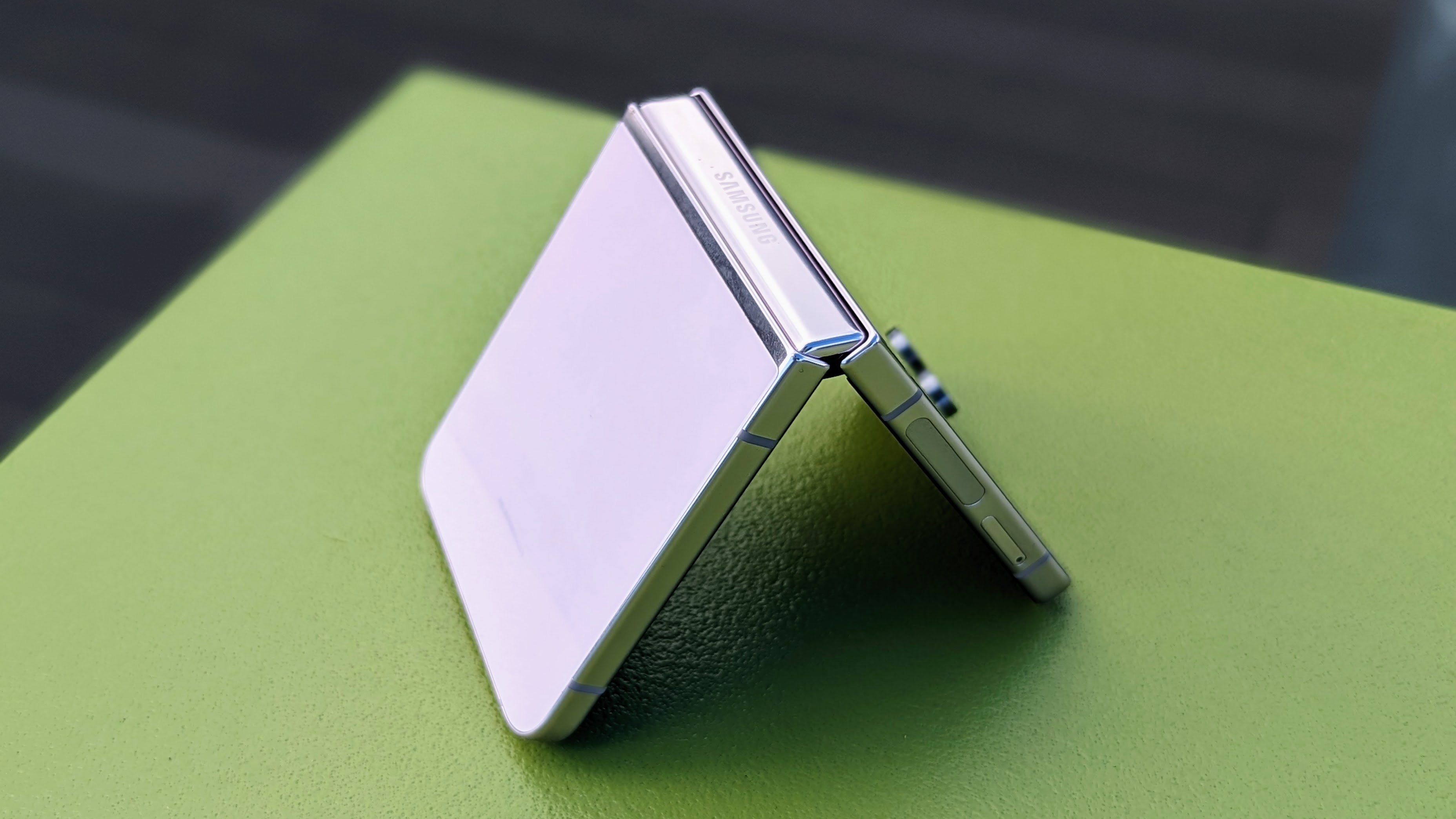
The Galaxy Z Flip 5 on the other hand is available with 256GB or 512GB of storage, and the latter variant often gets discounts making it cheaper than the base variant. However, there's only 8GB of RAM no matter which storage you go with. We didn't experience any sort of performance issues in our review, but having more RAM is always a good thing, especially when you factor in all the AI features it now packs.
The Flip 5 also has an IPX8 rating, which helps it survive being submerged in water, but it's not so tough if it has to deal with dust or dirt. 5G works well with all the carriers in the U.S. and the speedy USB standard means transferring data to and from the device is quicker than most phones.
Battery life was a bit of a mixed bag in our experience, as heavy users might need to charge the Flip 5 a second time before the day is over. The 3,700mAh capacity can only last so long on a single charge. Charging speeds are not the quickest by today's standards either. You'll need Samsung's optional charger to charge it at 25W, but wireless charging is still a decent 15W.
Motorola Razr Plus 2024 vs. Samsung Galaxy Z Flip 5: Cameras
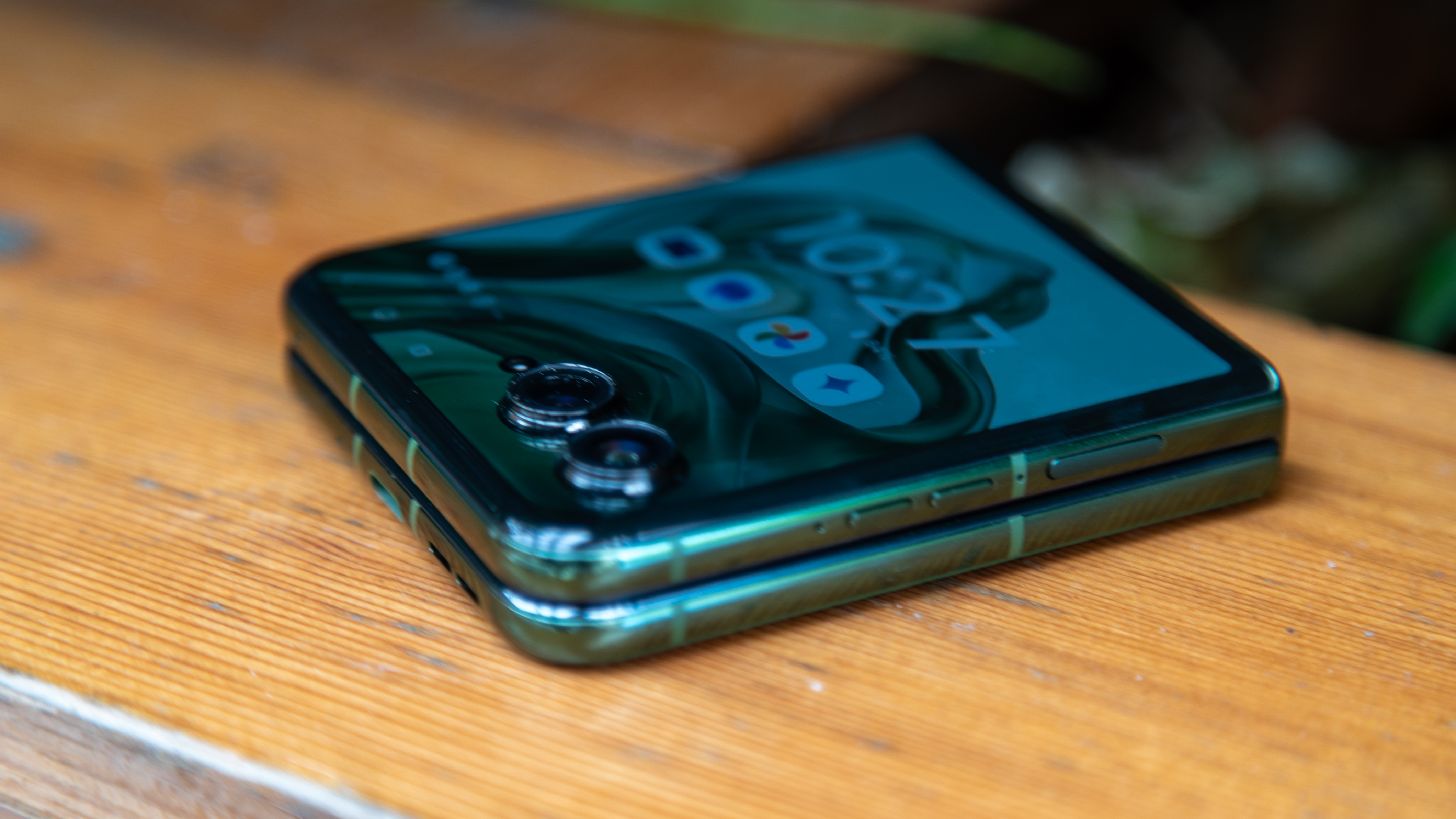
One of the big deciding factors when buying a new phone is the cameras, and Motorola has made a pretty bold decision with the Razr Plus 2024. If you love taking ultrawide photos, then you'll want to skip the Moto since it doesn't have one. That's right, Motorola has gone with a 50MP 2x telephoto camera in its place. The company says it's a calculated move based on the data and usage patterns it has observed. I guess we'll let the sales of the phone speak to whether this was a good move or not.
The main camera is also a 50MP sensor with optical stabilization. We'll have our final verdict on the image quality after the review, but the cameras seemed capable in our brief hands-on time with the phone. The main camera uses a 32MP sensor just like before. You can expect all the typical shooting modes from past Motorola phones, including new AI-powered features called Action Shot and Adaptive Stabilization.

The Samsung Galaxy Z Flip 5 has a pair of 12MP sensors on the outside (wide + ultrawide), and a 10MP sensor on the inside. These are the same ones from the Flip 4 and perform pretty well. It does a better job of capturing action shots thanks to reduced shutter lag, low-light photos are decent, and portrait shots are quite impressive. For a foldable of its type, the cameras are more than serviceable.
Motorola Razr Plus 2024 vs. Samsung Galaxy Z Flip 5: Software
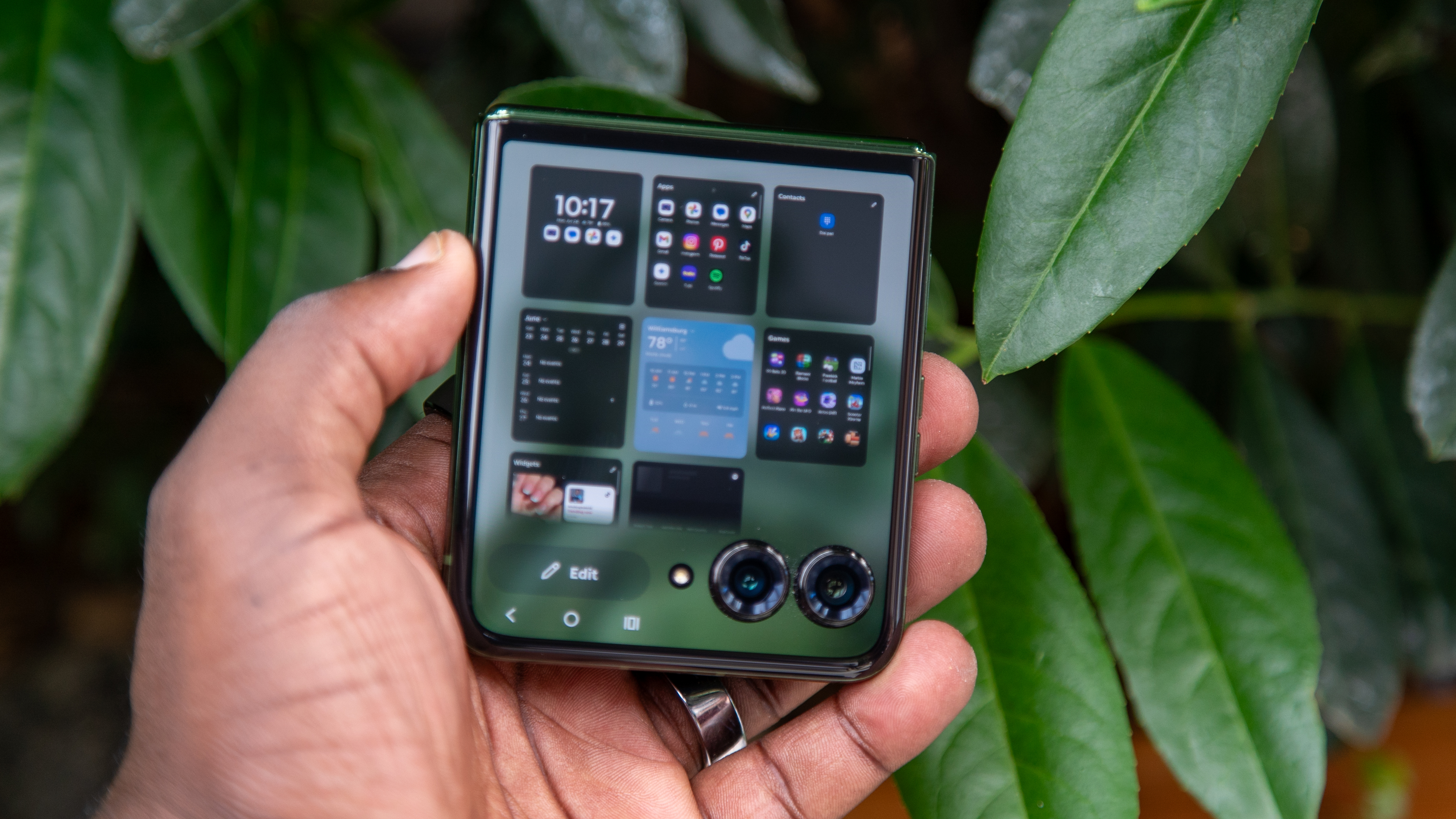
Software is probably one of the biggest differentiating factors for both phones. Samsung uses One UI 5.1, its heavily skinned version of Android 13, which comes with a whole bunch of customization options, and unique ways to use certain apps when the Galaxy Z Flip 5 is folded in half. Samsung has already begun rolling out One UI 6.1 for the Flip 5 which upgrades the software to Android 14 and introduces the company's own AI solution called Galaxy AI which debuted with the S24 series. The Flip 5 is due to receive a total of four OS upgrades, which means it's going to be relevant for the next few years as well.
The Razr Plus 2024 ships with Android 14 out of the box, and is scheduled to get three years of OS upgrades. Motorola has been sluggish in delivering promised updates for its existing phones, so we'll have to wait and see if things improve going forward for the new Razr. Motorola has its own lean skin over Android called Hello UX, and it will be bringing a host of AI features too later this year via an update in order to compete with Samsung.
Motorola Razr Plus 2024 vs. Samsung Galaxy Z Flip 5: Which should you buy?
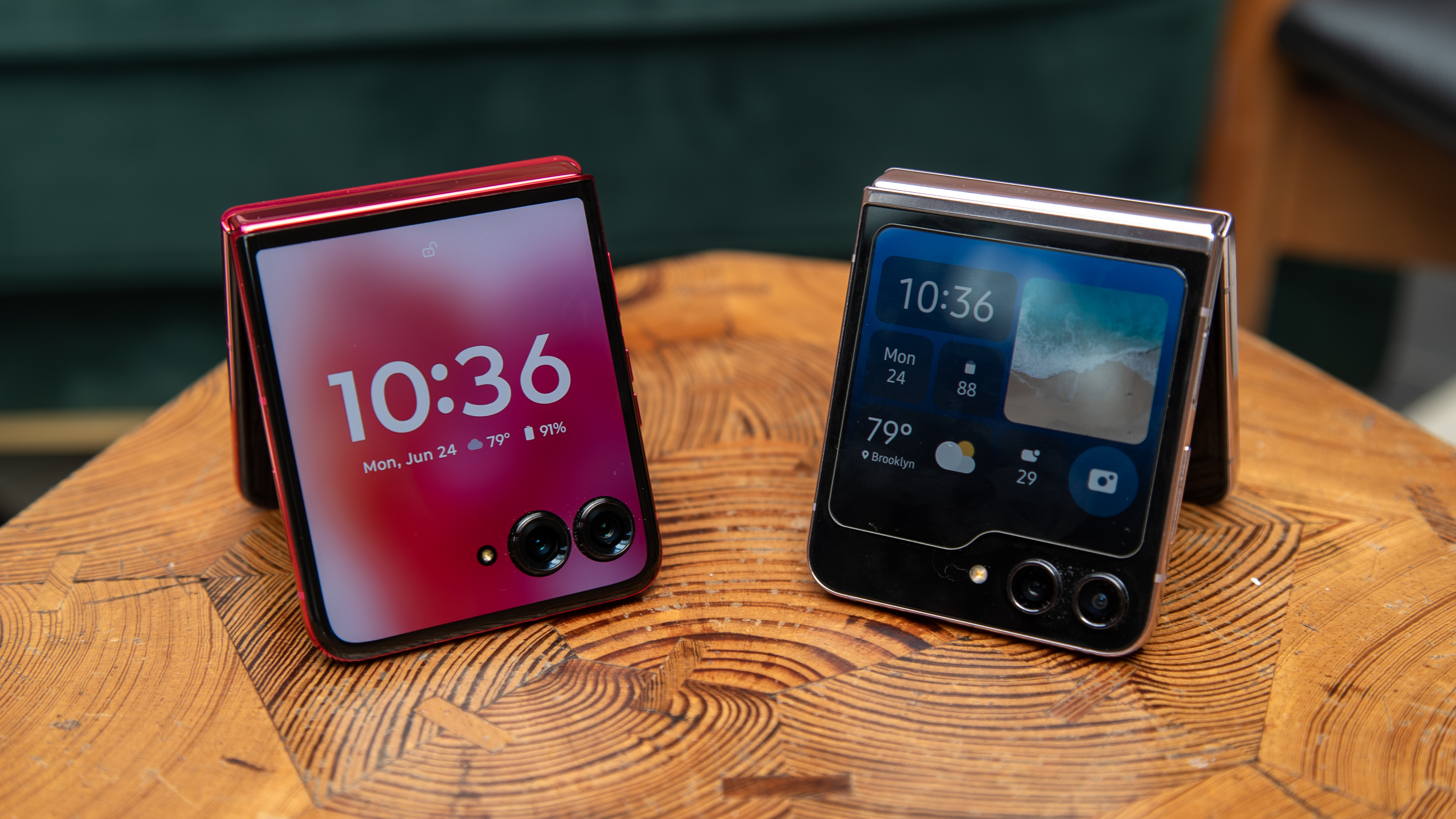
If you're not too finicky about local storage and rarely use the ultrawide camera on your current phone, you'll love the new Razr Plus 2024. It features big improvements over its predecessor in areas that matter like the display, performance, and cameras. The fact that Motorola has managed all of this for the same price as the previous model is quite a feat. Samsung's offering is a safe bet and it might be better value if you can get a good deal on one. It's also available immediately, as the Razr Plus only goes on sale on July 24.
If you're not in any hurry, it's worth waiting for the next-gen Galaxy Z Flip 6 to be revealed on July 10. It will most likely cost more than the current model but that premium could be justified if Samsung adds enough meaningful upgrades. The Z Flip 5 could also get a permanent price reduction, so either way, it doesn't hurt to wait.
Personally, I'd pick the Motorola Razr Plus 2024 for its fantastic displays, lean software, and faster charging. I don't mind not having an ultrawide camera as I feel telephotos offer better versatility. Round that off with the excellent Snapdragon 8s Gen 3 processor and you have a very compelling foldable for $1,000.
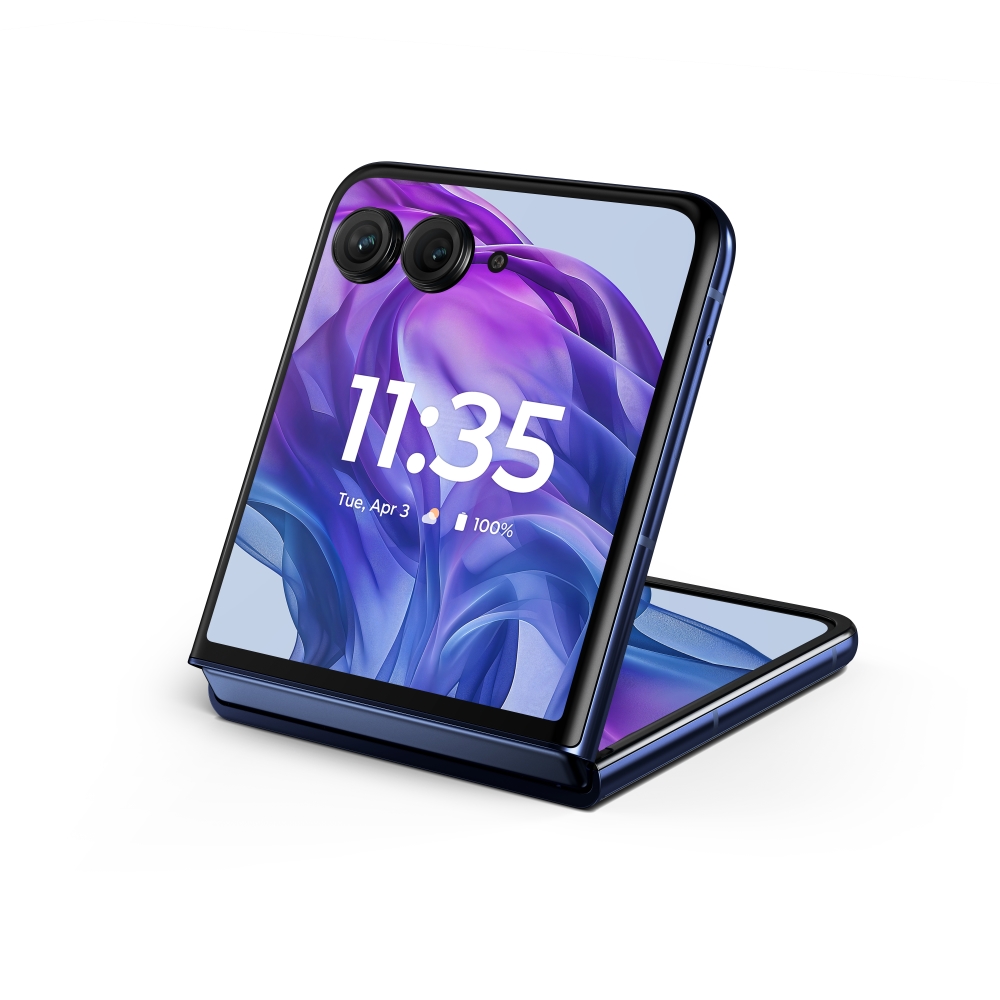
New kid on the block
The Motorola Razr Plus 2024 raises the bar for vertically folding phones, yet again. The new model packs big upgrades to the outer display, processor, battery, and cameras. Coupled with great software and promising AI features, the new Razr Plus is easily one of the must-have foldables in 2024.

Tried and tested
You can't go wrong with the Samsung Galaxy Z Flip 5. It performs great, looks stylish, packs decent cameras, and comes with a good set of displays. While it will soon be succeeded by the Z Flip 6, this 2023 model should be better value after a price drop.

Roydon has been writing about personal technology for 10+ years, and has covered everything from news, reviews, features, to on-ground coverage of big trade shows like CES. He's passionate about mobile technology and computing, dabbles with photography, and is still struggling to work his way through his Steam and PS4 game library.
You must confirm your public display name before commenting
Please logout and then login again, you will then be prompted to enter your display name.
